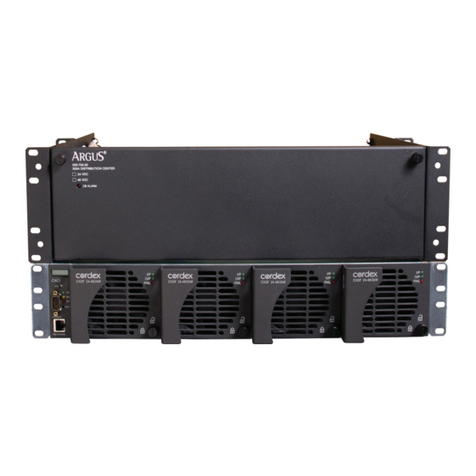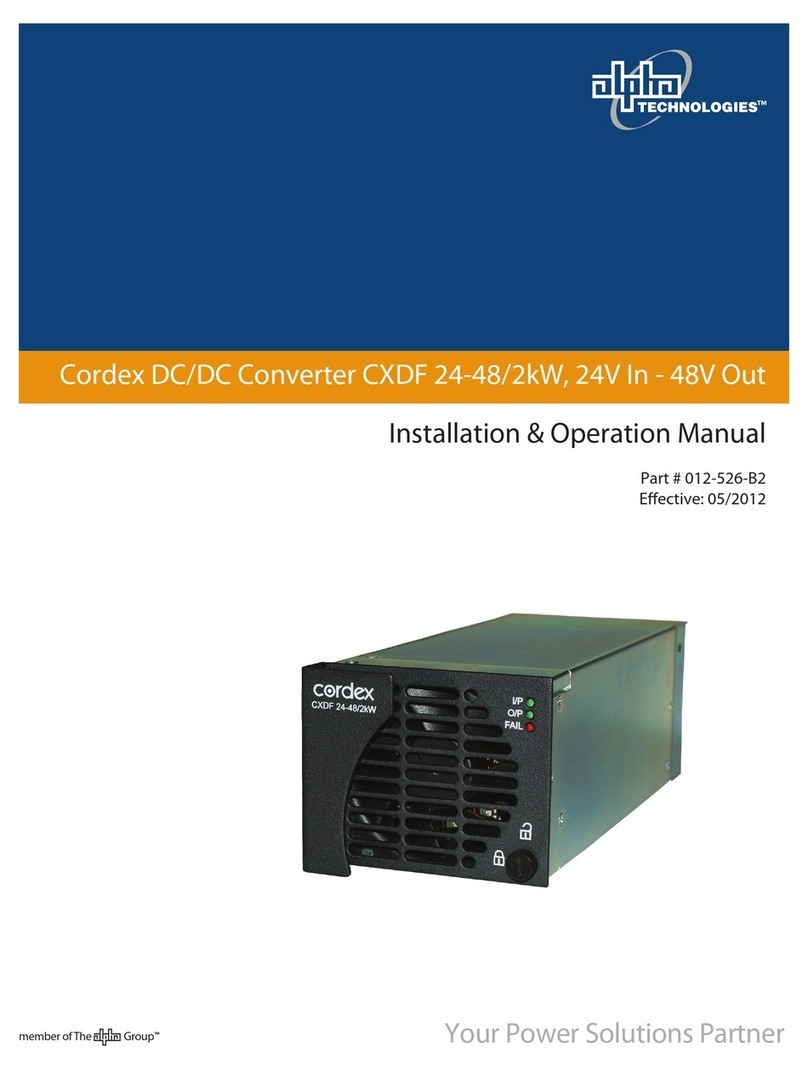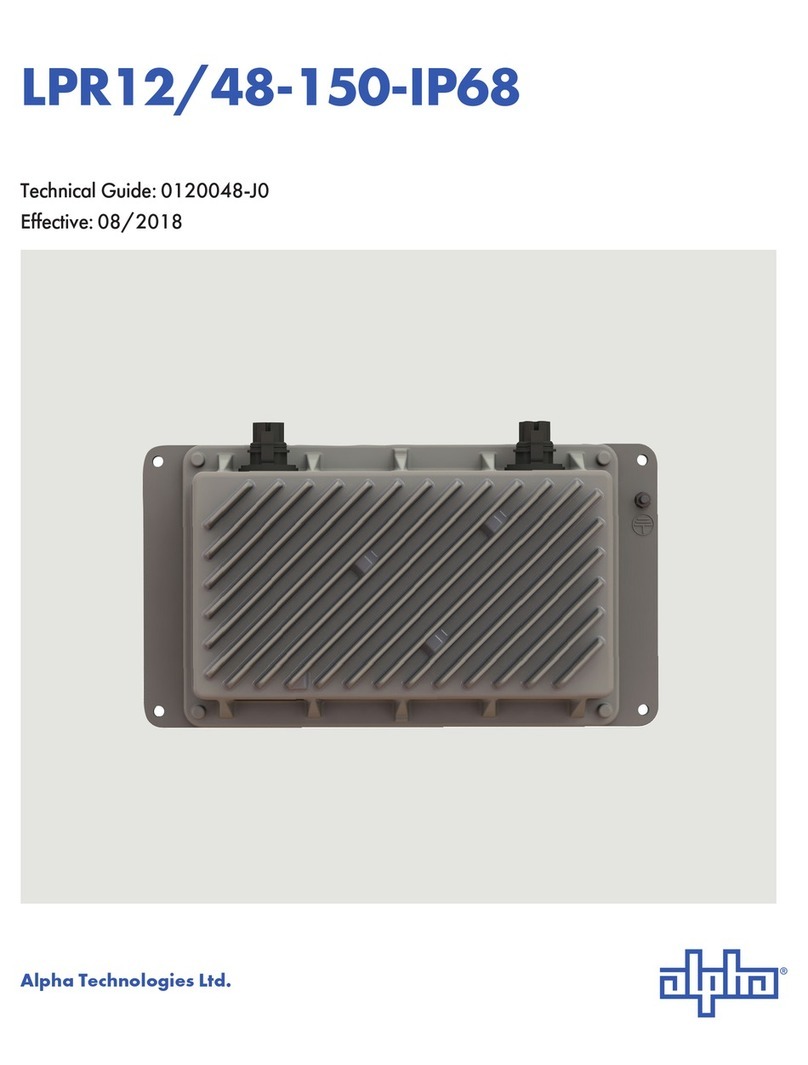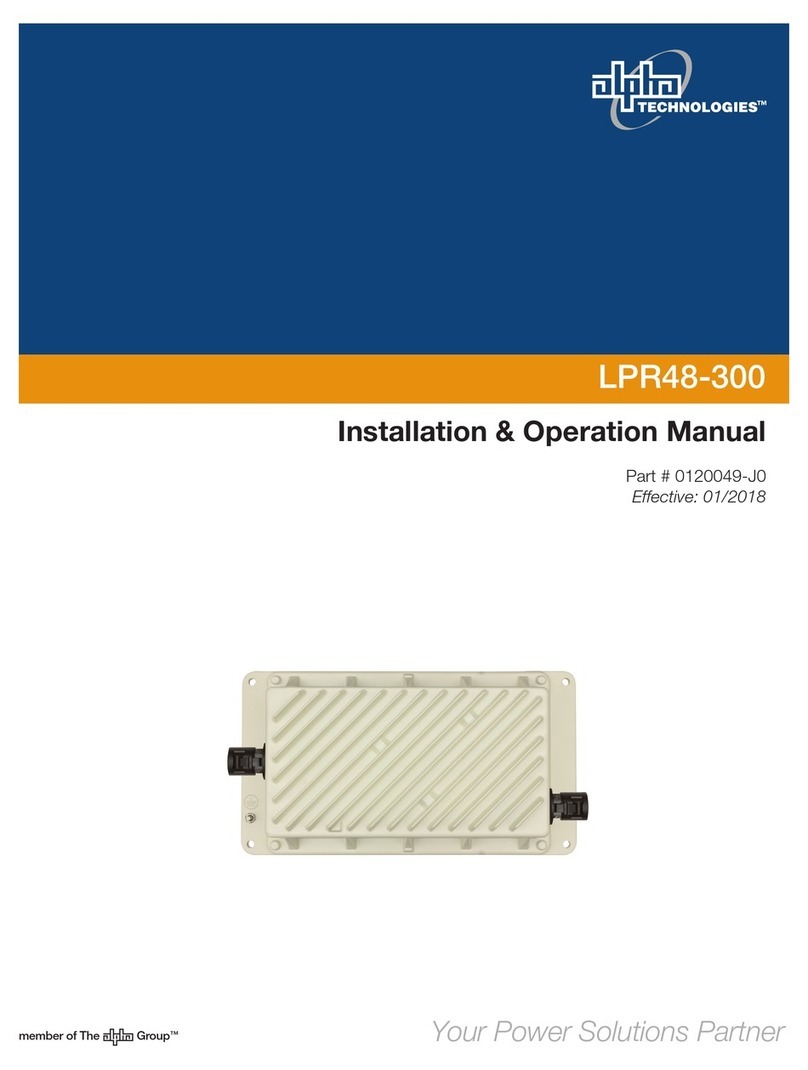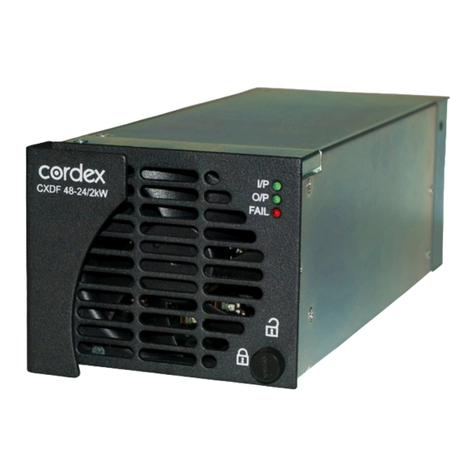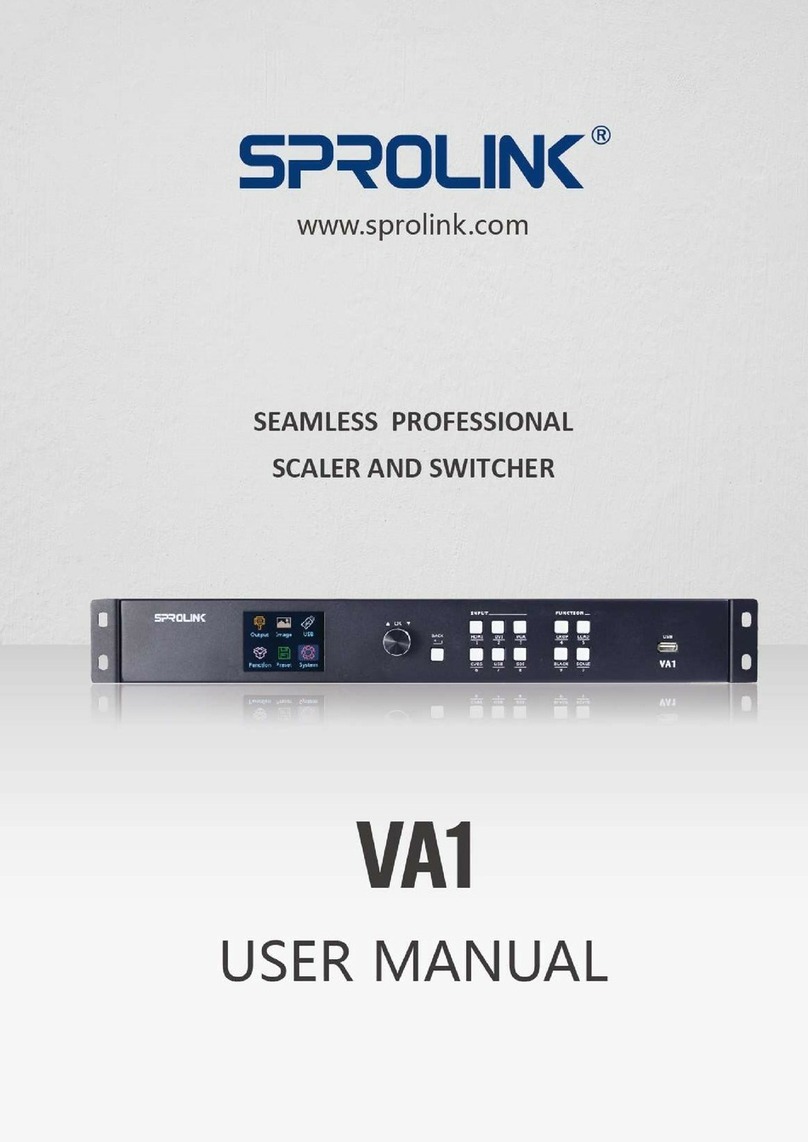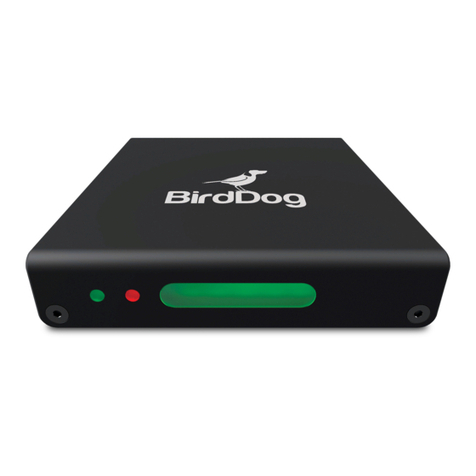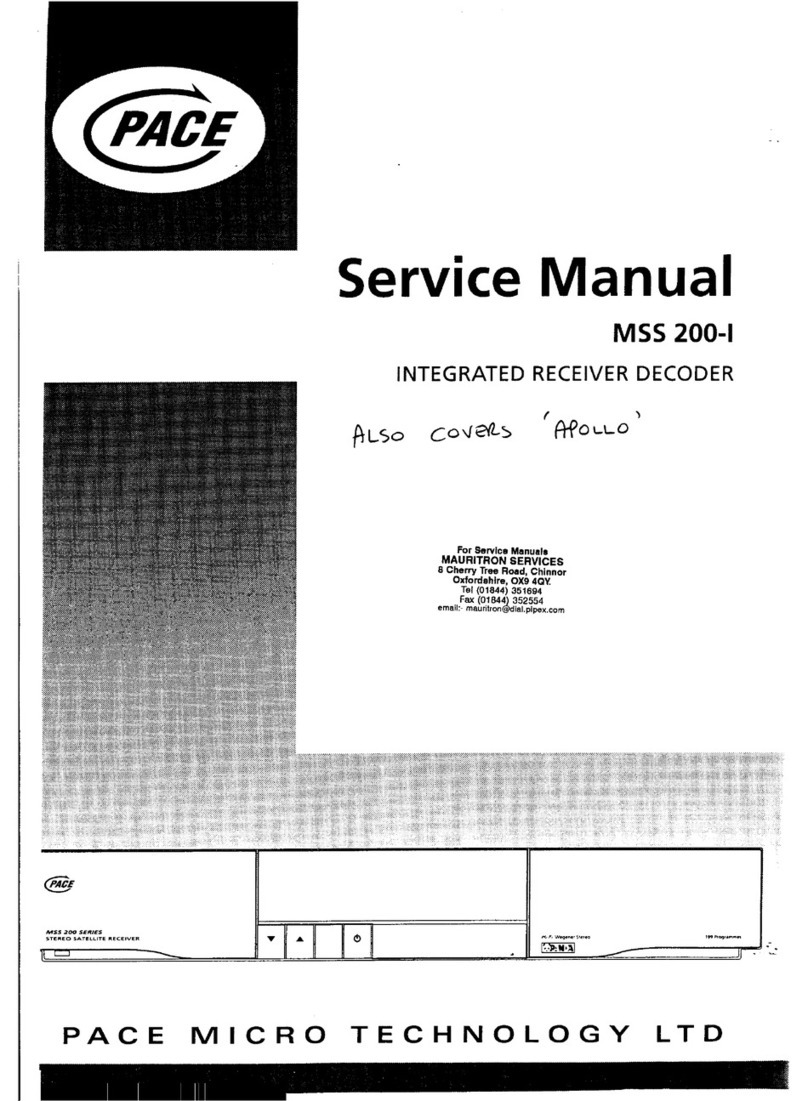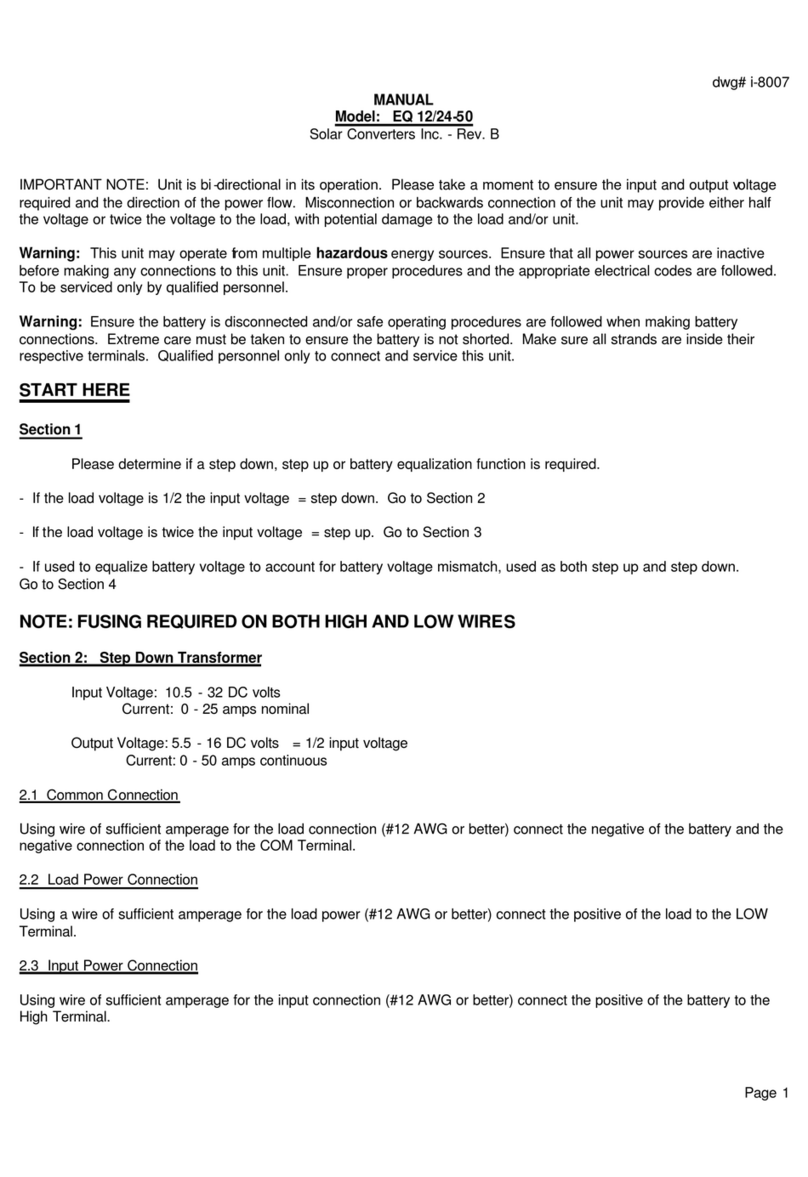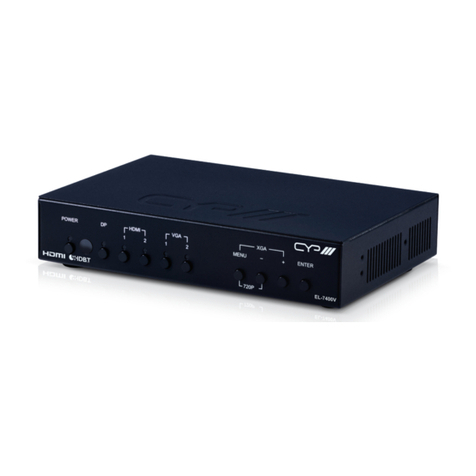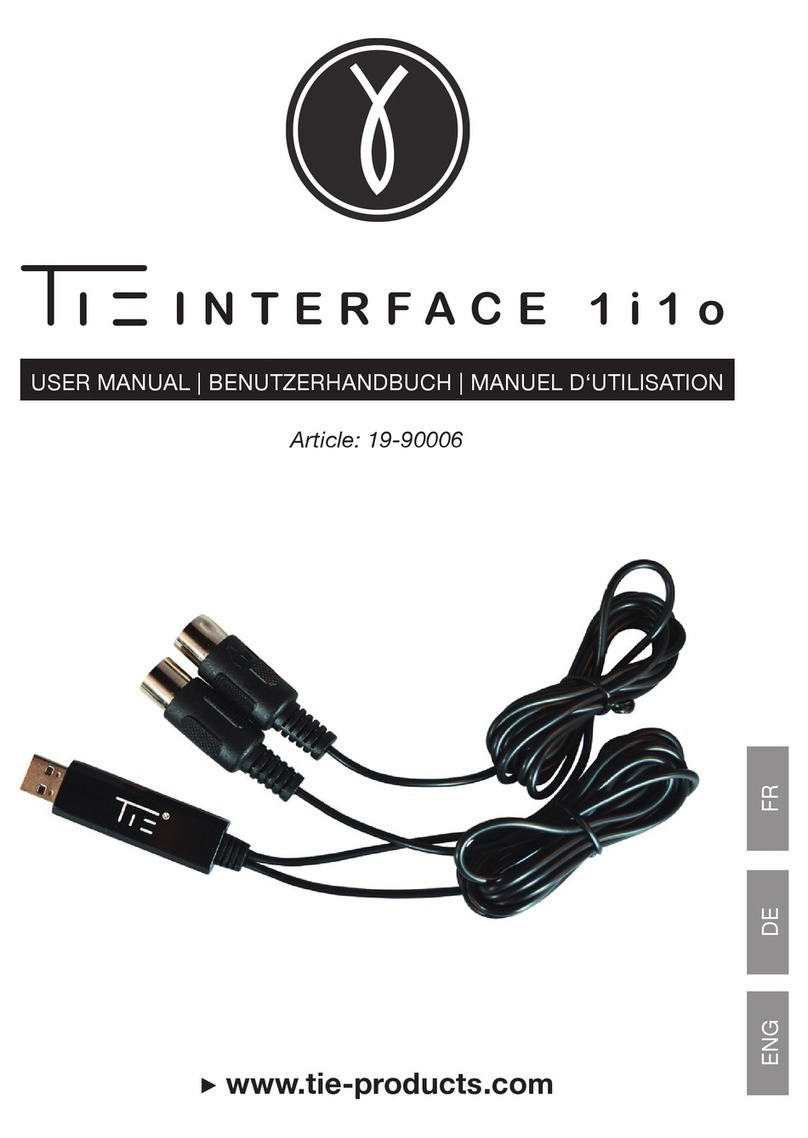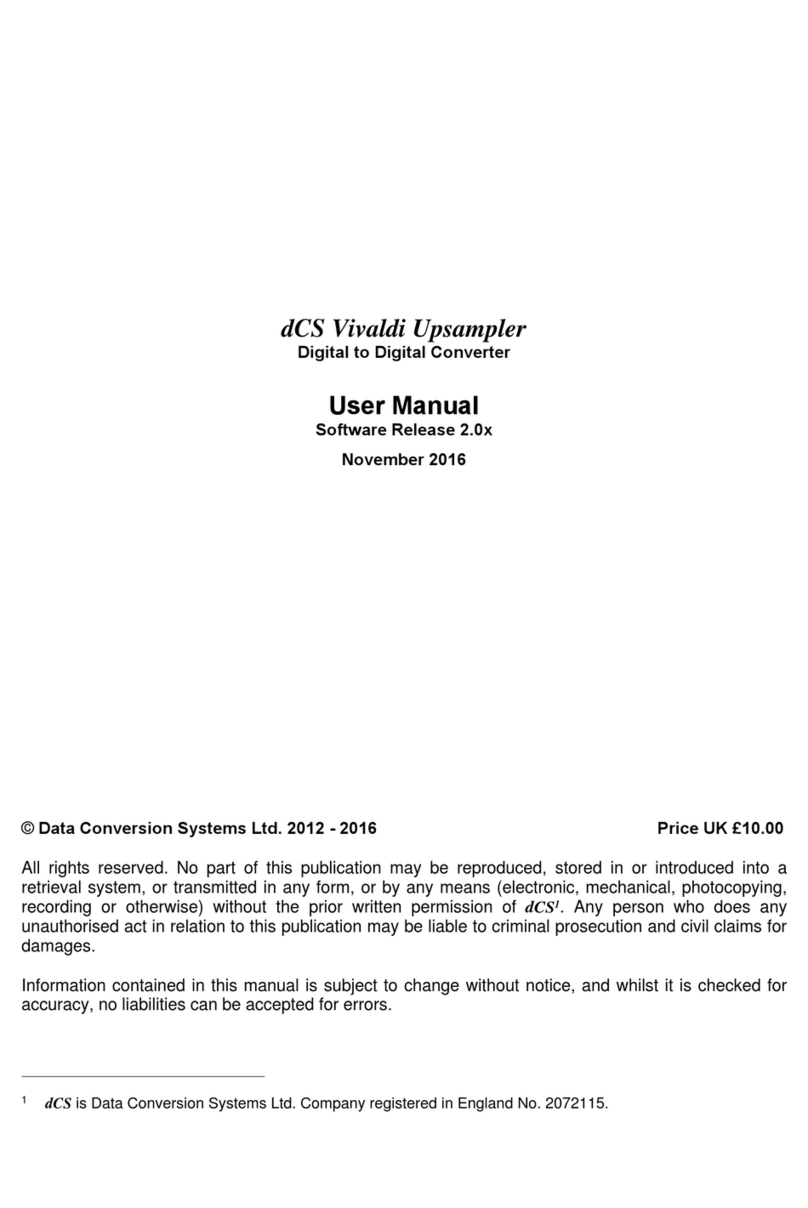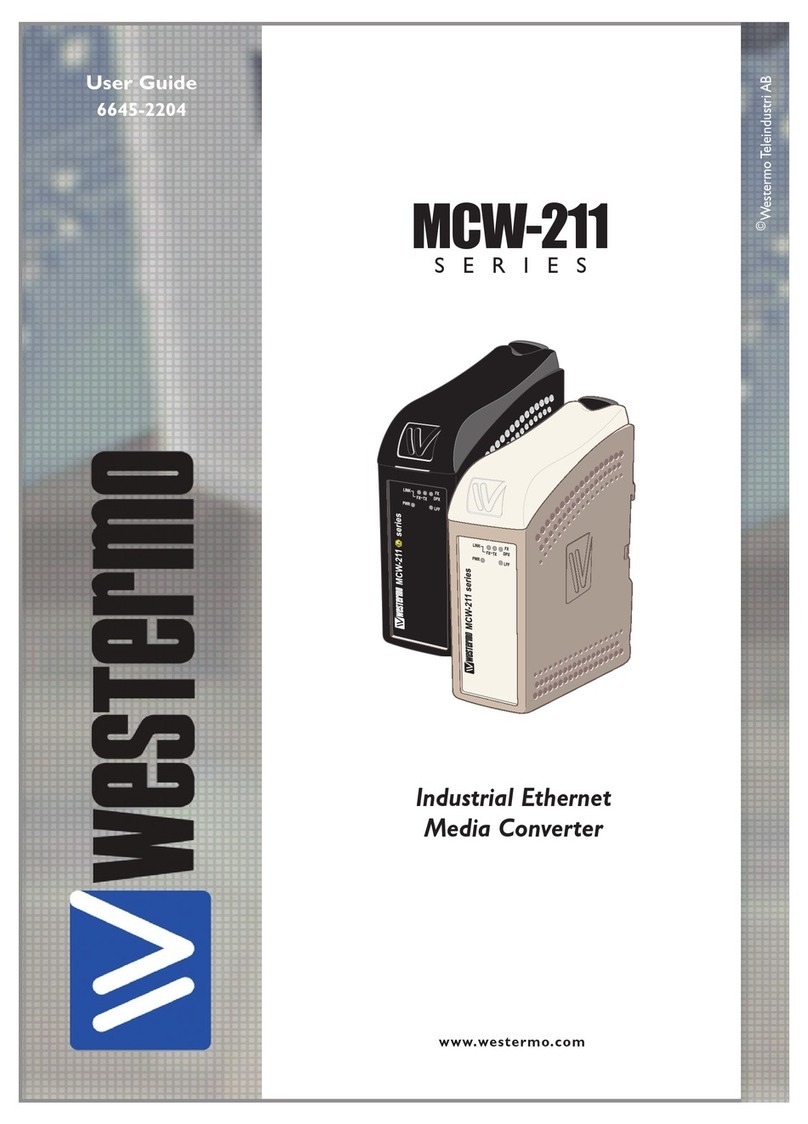
ii
TABLE OF CONTENTS
1INTRODUCTION ............................................................................................................................................................. 1
1.1 Scope of the Manual.........................................................................................................................................1
1.2 Product Overview ............................................................................................................................................. 1
1.3 Part Numbers and List Options.........................................................................................................................2
1.4 Accessories.......................................................................................................................................................2
2CONVERTER MODULE FEATURES .................................................................................................................................. 3
2.1 Microcontroller .................................................................................................................................................. 3
2.2 Indicators ..........................................................................................................................................................3
2.3 Fail Alarm..........................................................................................................................................................3
2.4 Alarm Masking Switch ...................................................................................................................................... 4
2.5 Test Points........................................................................................................................................................4
2.6 Output Power.................................................................................................................................................... 4
2.7 Over Voltage Protection (OVP) ........................................................................................................................4
2.8 Current Limit ..................................................................................................................................................... 4
2.9 Input Low Voltage Lockout ...............................................................................................................................5
2.10 Regulation and Paralleling..............................................................................................................................5
2.11 Over Temperature Protection.........................................................................................................................5
2.12 Ventilation.......................................................................................................................................................5
2.13 Paralleling Diode............................................................................................................................................. 5
2.14 Reverse Polarity Protection............................................................................................................................ 5
3CONVERTER SHELF FEATURES ..................................................................................................................................... 6
3.1 Module Locking Bar.......................................................................................................................................... 6
3.2 Site (Chassis) Ground ...................................................................................................................................... 6
3.3 DC Input............................................................................................................................................................ 6
3.4 DC Output.........................................................................................................................................................7
3.5 Alarm Cable/Relays.......................................................................................................................................... 7
4INSPECTION.................................................................................................................................................................. 8
4.1 Packing Materials ............................................................................................................................................. 8
4.2 Check for Damage............................................................................................................................................8
5INSTALLATION .............................................................................................................................................................. 9
5.1 Safety Precautions............................................................................................................................................ 9
5.2 Tools Required ................................................................................................................................................. 9
5.3 Shelf Preparation/Mounting............................................................................................................................10
5.4 Module Insertion/Removal..............................................................................................................................10
6WIRING AND CONNECTIONS ........................................................................................................................................ 11
6.1 Safety Precautions..........................................................................................................................................11
6.2 Site (Chassis) Ground .................................................................................................................................... 11
6.3 DC Input..........................................................................................................................................................11
6.4 DC Output.......................................................................................................................................................12
6.5 Alarm (Relay) Outputs ....................................................................................................................................12
7INITIAL STARTUP ........................................................................................................................................................ 13
7.1 Normal Mode of Operation .............................................................................................................................13
7.2 Reverse Polarity Protection............................................................................................................................13
8MAINTENANCE............................................................................................................................................................ 14

